On Gold Mountain Read online
Page 52
I don’t have a clue about who the next person is. Everyone laughs because it’s my driver, Xuem, whom I’ve only seen from the back.
Finally we come to “John,” Choey Ha’s son. He’s the tallest in the group by several inches. He’s sweet, young, earnest. He designs machines.
Everyone is more interested in asking questions than in answering them. Do I see Kuen often? When will Chuen come again? Am I sure that Choey Ha looks like Choey Lon? How am I related to them again? Even though they’re all my cousins removed to various degrees, shouldn’t I call Choey Ha “Auntie”? Shouldn’t I call all of them either “Auntie” or “Uncle”?
All of this transpires as the waitress brings out dishes of raw vegetables, meat, seafood, tofu, and something resembling black tofu. The waitress drops much of this into the boiling broth, and soon we’re using our individual wire baskets to scoop out what we want to eat. By tradition, it’s proper for the host to fill the guest’s dish with choice morsels. Fulfilling this function, Choey Ha drops tofu, the “black tofu,” and squid into my bowl. As I chew the squid, Chen Mou turns to me and says, “Oh, so you like ox stomach.” I stop in mid-chew, with the first piece of ox stomach still in my mouth. Well, I think to myself, I thought it was squid and it didn’t bother me. It shouldn’t bother me now. The waitress brings out a platter of river shrimp impaled on skewers and still twitching from their sudden death. We drop the bamboo sticks into the broth for a moment or two, burn our fingers peeling the shrimp, and manage to devour several dozen among us.
I eat my tofu and move on to the soybean greens and fish, but am reluctant to try the black stuff that lies reproachfully in my bowl. Finally I break off an edge with my chopsticks. It’s awful. This time I ask Chen Mou what it is. “Pig’s blood,” he answers. The cube of coagulated pig’s blood stays at the bottom of my bowl until Ha finally reaches in with her chopsticks, removes it, and places it in a soy-sauce dish. No words are spoken about this, but Ha continues to fill my bowl without dropping in another cube of the pig’s blood. No matter how many times I say I can’t eat another bite, she refills my bowl. She’s a good auntie.
Gradually they begin talking about themselves. “Their mother, Lui Ngan Fa, was from a very poor family from the village of Lo Hat, between Da Li and Nam Hoi,” begins Chen Mou. “Her parents sold her to the Fong family when she was eight years old. She never knew what happened to her relatives—perhaps they were killed by the Japanese or died of hunger. Lui Ngan Fa worked as a servant for your great-great-grandmother. Your family raised her. Even before 1949, life was sad for Ngan Fa, since her husband was in the United States with his wife. When the Communists came, her fields were taken away and she and her children could no longer stay in their home in the village. They moved to Foshan, to the three-story house where we were this morning. Ngan Fa was thrifty and rented rooms. Si Ping, your greatgrandfather’s fourth wife, lived in a house behind the Fatsan Grand Hotel. Life improved.”
The family wasn’t bothered again until the Cultural Revolution. Uncle’s family hid their valuables, including several wedding gowns, on the third floor. However, one of the tenants was made the director of the neighborhood association, and reported the hidden goods. Beginning in September 1966, the Red Guard came to the house seven times and took away the best antiques. As punishment, Si Ping and Lui Ngan Fa were sent back to Dimtao. In 1972, they were allowed to move back to Foshan, but were never able to retrieve their belongings.
After lunch, we pile back into our vans, go back to Wing On Road, park, and stroll toward what was once the Fatsan Grand Hotel. Since the civil war, the front of the hotel has housed a variety of businesses, including an herb shop, a chemical bureau, a pharmaceutical company, a radio station, and an educational company. In 1983, under the new leadership, China reevaluated its Overseas Chinese policy, and returned the hotel, as well as all other properties, to the Fong See and Fong Yun families. Cheun was paid forty years’ worth of rents. This front portion of the hotel is now leased to the Chinese Industrial and Commercial Bank and an import-export company. Chuen collects rent, but he can’t take the money out of China. As a result, the monies now accumulate interest in Chinese banks while Chuen tries to decide where to invest.
We pass through the courtyard—dark, dank, filled with bicycles and refuse—and go up the rickety stairs to what was once the lobby. The grand front desk is long gone, but the balustrades on the stairwells are in almost perfect condition. The tiles on the floors—now coated with years of filth—could still be brought back to a shiny gleam with a good dousing of chemicals and elbow grease. The room numbers show plainly on the glass transoms. The stained-glass windows are still in place and in perfect condition, although little light passes through because corrugated fiberglass has been mounted on the outside of them. The only illumination comes from a few fluorescent lights.
From 1949 until 1957, the hotel proper served as headquarters for the Foshan municipal government. Then it was left empty and deteriorated. In 1966 the government retook occupancy, spent 200,000 yuan on renovations, and managed the building until 1983, when it was given back to Chuen. It’s currently leased by a textile company to use as a kindergarten. (By the time this book is published, all of this will probably have been demolished and a multi-use complex—with commercial, residential, and office space—built in its place. Decisions about how much square footage in the new building will revert to the Fong family are being handled thousands of miles away, in Los Angeles, by Chuen. More changes are coming. It’s just a matter of time, Chuen believes, before Foshan spreads out into the countryside, either incorporating Dimtao or obliterating it entirely to make way for a Chinese version of tract housing.)
For now, the kindergarten is in place and functioning. In room 203, children rest together on wooden pallets. Some sleep under pink blankets, others raise their heads to peek at the intruders. On the third floor, another guest room has been converted to a classroom. Each wall is lined with cubbies stuffed with papers, and a jacket here and there. Yet another room is outfitted with child-sized tables and chairs. At the end of the hall a floor-to-ceiling window has been boarded up. All of the western-style toilets—luxuries back in the twenties—have been replaced by squatters.
We retrace our steps and go around the hotel to another courtyard in the back. From here my guides point to where the fourth-floor kitchen has been removed. Above and below a window on the hotel, Ming Tia shows me a stone inscription that reads, “This is the property of Fong See.”
On our way to Dimtao, I see that what Yun said was true. The village would have been impossible for me to find by myself. Our two-car convoy heads out of Foshan, eventually turning onto a dirt road that passes under the expressway. We crisscross back and forth under the expressway four times before we get to the village. This is an ordeal, since at every underpass we must stop and ease the vans through without bumping their roofs. Fields spread out on either side of us. We cross a small, narrow bridge and pull to a stop in a clearing just outside Dimtao, for even today cars can’t drive into the village. From the van we can see my greatgrandfather’s house towering over most of the buildings.
Dimtao is still home to about three hundred people, most of whom are peasants. The houses are close together, with only inches between them. We pass chickens pecking at trash lying in open lots and a pig snuffling for a tempting tidbit. We walk to Uncle’s house, where the rooms are empty and swept clean. We spend a lot of time here going over the complexities of the kidnapping.
I had expected to find the records of the Fongs in the family association house, where, for centuries, villagers have kept birth and death records on stone plaques. I had especially wanted to see the names of Milton, Bennie, Ray, Sissee, and my grandfather. I had also hoped to find the true date of birth for my greatgrandfather. The building still stands—cathedral-like, but desolate and abandoned. The Red Guard destroyed records in villages and cities across China during the Cultural Revolution. Dimtao was no exception.
We pass t
hrough the front gate of Fong See’s compound into the preliminary courtyard, and on into the main courtyard. The whitewash has long faded; only the raw bricks remain, rendering the once-elegant house a basic gray. The front entry is still grand; on either side of it are stone panels carved with landscapes. Two small glazed ceramic elephants face each other on either side of the door, with pots of dwarf kumquat trees sitting on their backs.
The large courtyard kitchen is gone, as are many of the other outbuildings. Only a few steppingstones survive of the small pavilion that stood directly in front of the house. Most incredibly, the house has been cut in half. During the Japanese invasion, timber and metalwork were taken out of the house, and termites moved in. Then, during the Cultural Revolution, the left section of the house collapsed. Si Ping sold the majority of the bricks, keeping just enough to seal up half of the house. Now only the main entrance and everything to its right remain. The original foundation snakes through the garden as an eerie reminder of what once was. But what was once just a few shrubs and scrawny seedlings is a now a veritable jungle of banana trees, palms, and ferns. The mango tree that my greatgrandfather planted with his own hands now stands fifty feet high.
I learn much about the family in Los Angeles from what I see here. For example, Sissee and Gilbert, Ming and his wife, Bennie and Bertha, my grandparents, even Ray and his wife, all had what I thought of as “Asian-flavored” gardens back in California. But they weren’t “flavored” at all. They were pure Chinese. Old ginger jars and squat earthenware pots brought out of China were filled with geraniums, orchids, or cymbidiums. If a bamboo-and-straw broom was lying about, that was fine, as long as it looked artistic. If a shipping tin had been converted into a crude dustpan, so much the better—why waste money, why waste trash, use everything at hand.
An old woman, the daughter of one of Fong See’s brothers and the only relative still living in Dimtao, currently serves as caretaker. She was the caretaker even before Fong See’s death. She stands a little over four feet tall and wears a padded jacket. Meeting this relative, I can’t help but wonder what would have happened if Fong See had never left China to search for his father. Would I—or rather a full-Chinese version of myself—still be living in the village? Would I be a peasant working in the fields, with a pole strung across my shoulders weighted down with watering cans or bundles of produce? Would I have ever seen a westerner, a bathtub, a television? There is no time for questions of this sort.
The old woman pushes us into the house and points out the little shrine she’s constructed for Si Ping, just inside the entrance. When Fong See’s fourth wife died, she left five hundred yuan to the old woman and asked her to take care of the house and keep a shrine in her memory. On the small table are a photo of Si Ping, a plate of kumquats, and a few sticks of incense smoldering in a pot of sand.
It’s hard to imagine what the house was once like. The glass-domed skylight was removed sometime in the last decade. The spiral staircase is also gone, replaced by narrow, rickety, steep stairs—little more than a ladder, actually. The arched entry leading to the bedrooms is gone, sealed in by brick. The beautifully carved room dividers have been chipped and nicked, although the etched and painted glasswork remains intact. They are stunning enough that Chen Mou whispers, “You could sell these for a lot of money if you could ever get them out of the country. Of course, you’d never be able to get them out.”
Much of the house’s original grandeur is hidden under layers of dust and grime. The clay sewer pipes decorated in enameled vines, the delicate bird carvings around the windows, and the garlands over the archways are all still in good condition. However, the decorative carved and enameled landscapes that once graced the second-story veranda were destroyed during the Cultural Revolution. Shadowy traces of them, like skeletons on an X ray, still cling to the walls.
While we’re upstairs on the veranda and later on the roof, the family begins recounting their version of the adventures of Fong See—things I’d never heard before, but was able to incorporate into this book: how Fong See’s mother carried people from town to town; how he borrowed money to go to the States; how his first return to Dimtao, in 1901, set him on a life’s mission to help the village; how he not only bought ricefields and rice seed, but also provided housing for the people of the village who needed it. From up on the roof, they point out the tile roofed houses—really little more than shacks—that huddle next to the walls of Fong See’s compound. He built those houses for his workers and their families, they tell me. It is now that Fong See becomes a three-dimensional person to me. I had always thought of him as a bit of a tyrant. But now I see that he had also helped the people of this village in ways that no one had done before or since.
It’s still drizzling when we traipse through the deep, wet weeds of the village cemetery to Si Ping’s grave. (Thank God I wore those boots!) Choey Ha worries about my skirt getting wet, and I have to politely bat away her hand each time she tries to lift up the hem to keep it from dragging in the muddy weeds. The grave sites—burial mounds here in China—are uncared for, with weeds almost completely covering them. “We used to build expensive tombs,” Ming Tia apologizes. “I wanted to have one built for Si Ping. I sent three telegrams to Chuen to ask for money, but I received no response. I paid ten thousand yuan for her coffin in 1987….”He did his best, he explains, without help from his more prosperous relatives in the United States.
Back at the vans, we say our good-byes and finalize a plan to meet at the White Swan tomorrow. Within five minutes of being back on the expressway, Chen Mou falls asleep. An hour later we beep our way back through Guangzhou and into the White Swan parking lot. Chen Mou isn’t the only one who’s tired. I’m exhausted and very cold after standing in the rain in wet clothes all day. When I get to my room, I climb in bed with my clothes still on, and fall straight asleep. Two hours later I wake up, grab a bag of potato chips and a Sprite from the mini-bar, and take a walk through the lobby. The place is hopping, but it’s too much. Back in my room, I turn on the TV. Thanks to satellite technology, I watch a little of The Right Stuff, check the news, which is all about the upcoming Academy Awards, and watch previews for The Witches of Eastwick and The Mission, both part of the station’s Academy Award Week.
The next morning we meet downstairs in the tour assembly area. Choey Ha presents me with an enameled canister of local tea. Le Chu Wa brings out a miniature wooden water buffalo with a small boy sitting on its back, as a gift for my sons. Choey Ha’s husband, Guan Gin Hong, hands me a package wrapped in brown butcher paper and tied with string. Inside, he tells me, is a statue of Kuan Yin for Teruko. He hopes she will enjoy this statue, since Japanese and Chinese Buddhists worship the deity.
When Chen Mou arrives, we traverse the many terraced levels to the River Jade Canton Specialty Restaurant for breakfast. Today we are not quite as large a crowd—only Choey Ha and her husband, Le Chuwa (Joanie), Chen Mou, Ming Tia and his wife, and me. Once we’re seated in our small banquet room, young waitresses bring out steamers of bao stuffed with salted egg, chicken feet with honey sauce, shrimp dumplings, pork dumplings, water-chestnut cake, steamed fish mouths with bean sauce, egg tarts, sesame dumplings, and bowls of congee (what we have always called jook) with dried scallops and ginkgo fruit. We noisily sip tea, spin the lazy susan, and point out to each other the best morsels in each steamer dish or bowl.
These relatives are open, helpful, candid, whereas back in Los Angeles, brothers, sisters, and cousins were still guarded in their discussions, perhaps following the old adage “Sweep the snow in front of your own doorstep, and do not bother about the frost on top of the other’s roof.” (When all is said and done, I believe the main outcome of this trip was that my family in Los Angeles began to open up. Just weeks after returning, at an engagement banquet for Sumoy’s son, I ran into Kuen, Fong Yun’s son who went to Canton with the See family in 1919 and who avoided being kidnapped in 1927. After chatting for a few minutes about the house where he was born, he said he still f
elt badly about Duk, the brother who died in the kidnapping. “I didn’t know he was going to die. If the kidnappers had found me, maybe that brother would be alive.”)
Ming Tia has brought a notebook that he’s filled with notes. He describes my great-great-grandfather, Fong Dun Shung, and his kung-fu show. The other members of the family provide the names of “lost” relatives, often consulting and arguing over dates and relationships. They chronicle what happened to Fong Guai King, Ngon Hung’s mother, after 1949. Having been cataloged a landlord and hence one of the bad classes, Chen Mou translates, her life was made miserable. Over the years, she would periodically be made to kneel in the street for public confessions. Ngon Hung sent money, but even this didn’t help.
In many ways Fong Guai King and Si Ping were extremely lucky. During the years of 1950, 1951, and 1952, Mao himself guessed that over 800,000 “counterrevolutionaries” were killed. A broader estimate, which includes landlords beaten to death and other civilian executions between 1948 and 1955, puts the number at closer to four million. In 1957 an Anti-Rightist Campaign was targeted against another half-million Chinese; their deaths numbered in the tens of thousands. Then, in 1958, Mao launched the Great Leap Forward. Designed to encourage China to catch up with the West, it resulted in the greatest famine known to mankind. It has been suggested that as many as thirty million people died between 1958 and 1961.
Fortunately for Fong Guai King and Si Ping, Ngon Hung sent additional funds in 1958 for the two women to move to Hong Kong. This was hardly a match made in heaven—between the fourth wife and the mother of the third wife—and Si Ping eventually abandoned the possibility of freedom to move back to Foshan. In Hong Kong, Guai King adopted several sons, who cheated her out of her house, her savings, her possessions. Ngon Hung was so mad that she refused to send any more money. In time, Guai King was placed in a nursing home. In 1971 she “broke her leg and died of complications.”

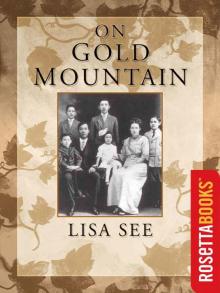 On Gold Mountain: The One-Hundred-Year Odyssey of My Chinese-American Family
On Gold Mountain: The One-Hundred-Year Odyssey of My Chinese-American Family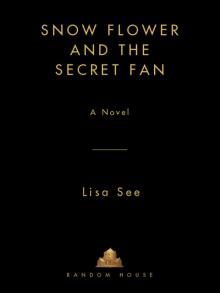 Snow Flower and the Secret Fan
Snow Flower and the Secret Fan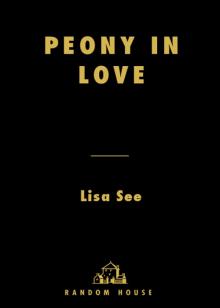 Peony in Love
Peony in Love Flower Net
Flower Net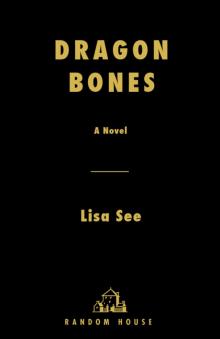 Dragon Bones
Dragon Bones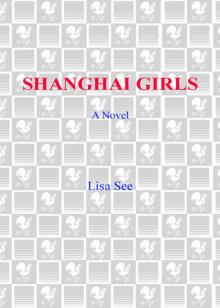 Shanghai Girls
Shanghai Girls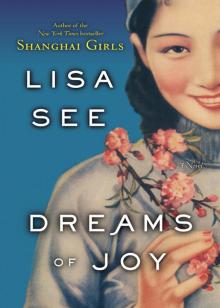 Dreams of Joy
Dreams of Joy The Island of Sea Women
The Island of Sea Women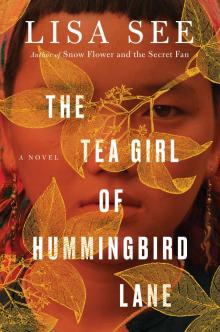 The Tea Girl of Hummingbird Lane
The Tea Girl of Hummingbird Lane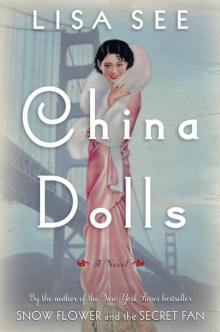 China Dolls
China Dolls The Interior
The Interior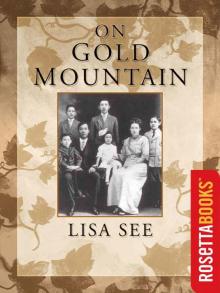 On Gold Mountain
On Gold Mountain